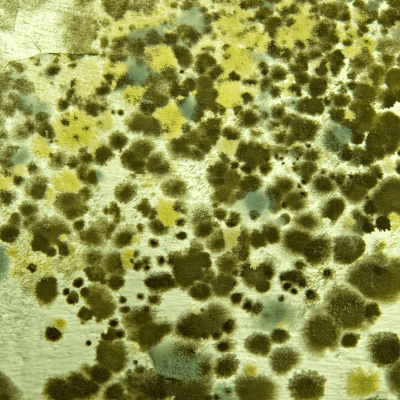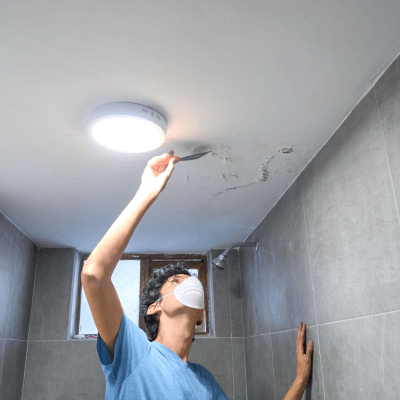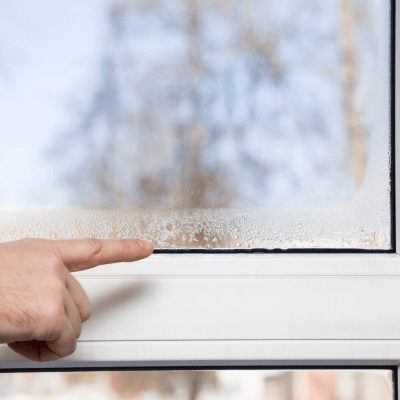Mold isn’t just an eyesore; it’s a silent troublemaker, lurking in the shadows and waiting to cause chaos for your health and home. This sneaky pest loves cozy nooks and crannies—places you’d never think to check. Mold especially thrives in those damp, dark corners, spreading faster than gossip at a Texas barbecue. The consequences? Everything from pesky allergies to serious respiratory conditions. And let’s not forget the havoc it can wreak on your house itself, leading to expensive repairs that could leave your wallet feeling lighter than a tumbleweed in a dust storm.
Living in Austin, TX, we know how our beloved humidity can make mold feel right at home. That’s why it’s crucial to keep an eye out for this unwelcome guest. Enter Howard Environmental, your go-to gurus for mold detection and inspection. With our expertise, we’ll help you catch mold before it turns your home into a haunted house, ensuring your living space stays as safe and healthy as a Hill Country breeze.
Why You Need to Check for Mold in Your House

Catching mold early is essential for keeping your home both healthy and safe. Those tiny mold spores can cause a range of health problems, from pesky allergies to serious respiratory issues. If someone in your household has asthma, allergies, or a weakened immune system, mold can be especially troublesome.
Beyond the health concerns, mold also loves to feast on your home’s structure, munching away at materials like wood, drywall, and insulation. Over time, this can result in significant damage that’s costly to repair and could even lower your property value.
The sneaky part? Mold often grows in places you might not notice right away. It thrives in damp, dark, and poorly ventilated areas. Common culprits like high humidity, water leaks, and condensation create the perfect conditions for mold to flourish. Bathrooms, basements, kitchens, and areas around windows are prime spots because they tend to stay moist.
Living in Austin, with its humid climate, means these conditions are pretty common. That’s why regular mold checks are so important. By keeping an eye on things and inspecting your home regularly, you can catch mold before it turns into a big problem. This way, you protect both your health and your home from the hidden dangers that mold brings along.
How to Check for Mold at Home
Doing a visual inspection for mold is a fantastic first step in keeping your home safe. Here’s a user-friendly guide to help you spot mold in the most common areas:
Bathrooms
Bathrooms are prime real estate for mold because they’re often damp. Here’s where to check:
- Shower and Bathtub: Keep an eye out for black, green, or white spots around the tiles, grout, and caulking. It’s like Mold’s personal art gallery.
- Under Sinks: Peek into the cabinet beneath the sink for any leaks or water stains.
- Ventilation: Ensure your bathroom has good ventilation. If it feels stuffy or damp, mold could be hiding in the walls or ceiling.
Kitchens
Kitchens can also be prone to mold due to frequent water use. Inspect these areas:

- Under the Sink: Look for water stains, discoloration, or dampness in the cabinet under the sink. It’s the mold equivalent of a penthouse suite.
- Around the Refrigerator: Especially if your fridge has a water dispenser or ice maker, check behind and underneath for any signs of moisture.
- Around the Stove: The steam from cooking can create a moist environment. Look for signs of mold on the walls or backsplash.
Basements
Basements are often damp and dark, making them a perfect place for mold to grow. Here’s what to watch for:
- Walls and Floors: Look for discoloration, water stains, or peeling paint.
- Windows: Check around windows for condensation, water stains, or mold spots.
- Storage Areas: Inspect boxes and items stored directly on the floor. Mold loves cardboard and other organic materials.
Around Windows
Windows can be a problem area due to condensation. Here’s how to check:
- Window Sills and Frames: Look for any discoloration, water stains, or visible mold spots.
- Condensation: If you frequently see condensation on your windows, check nearby walls and curtains for mold.
General Tips
- Discoloration: Mold often appears as black, green, or white spots. Scan any damp area like a hawk.
- Water Stains: Any signs of water damage, like stains on walls or ceilings, can be mold’s calling card.
- Dampness: Areas that feel damp or have a musty smell are prime spots for mold growth. Trust your nose—if it smells funky, it’s worth investigating.
By following this guide, you can catch mold early and keep your home a safe haven.
How to Test for Mold: DIY vs. Professional Methods
DIY Methods
If you suspect mold in your home, there are a few DIY methods you can try:
- Over-the-Counter Mold Test Kits: These kits usually involve taking air samples or swabbing surfaces and then sending the samples to a lab. While convenient, they have some limitations:
- Less Accurate: DIY kits can miss some types of mold or give false positives/negatives.
- Limited Scope: They often don’t provide a complete picture of the mold situation in your home, such as the extent or specific locations of mold growth.
Professional Methods
Professional mold testing is the best option for a thorough and accurate assessment. Here’s how experts at Howard Environmental can help:
- Air Quality Testing: This involves measuring the concentration of mold spores in the air, which can indicate hidden mold.
- Surface Sampling: Professionals take samples from various surfaces to identify the type and severity of mold.
- Moisture Mapping: Advanced tools detect hidden moisture, helping to locate mold that might not be visible.
- Detailed Report: We provide a comprehensive report detailing the findings and recommendations.
Professional testing offers precise and detailed results, ensuring no mold goes undetected. Our methods’ accuracy and thoroughness ensure that your home is safe and mold-free.
Steps to Take if You Discover Mold
Discovering mold in your home can be alarming, but taking the right steps can prevent further damage and health risks. Here’s what you should do:
Immediate Actions
- Ensure Safety: Avoid direct contact with mold. Wear gloves, a mask, and safety goggles if you need to handle affected materials.
- Contain the Area: Seal off the affected area to prevent mold spores from spreading. Use plastic sheeting and tape to isolate the space.
- Remove Moisture: Address the source of moisture immediately. Fix leaks, improve ventilation, and use dehumidifiers to reduce humidity levels.
- Document the Damage: Take photos and notes of the affected areas. This documentation can be helpful for insurance claims.
Professional Remediation

For safe and effective mold removal, professional remediation is recommended. Here’s a brief overview of the process:
- Assessment: Professionals conduct a thorough inspection to determine the extent of the mold problem.
- Containment: The affected area is sealed off to prevent mold spores from spreading during the removal process.
- Removal: Specialized equipment and techniques are used to remove mold safely.
- Cleaning: The area is cleaned and sanitized to ensure all mold spores are eliminated.
- Prevention: Measures are implemented to prevent future mold growth, such as improving ventilation and addressing moisture issues.
Stay Vigilant Against Mold
Regularly checking for mold is essential to maintain a healthy home. Mold can cause serious health issues and structural damage if not detected and addressed promptly. For more information on the health effects of mold and how to prevent it, visit the CDC’s mold information page. Howard Environmental is dedicated to helping Austin residents with expert mold detection services, ensuring your home remains safe and mold-free.
Ensure Your Home’s Safety: Book a Mold Evaluation Now
Don’t take mold lightly. Protect your home and health by scheduling a comprehensive mold evaluation with Howard Environmental. Contact us today at (512) 560- 2428 or visit our website to book an appointment. Ensure your home is safe and mold-free with our expert services.

